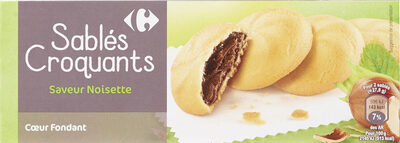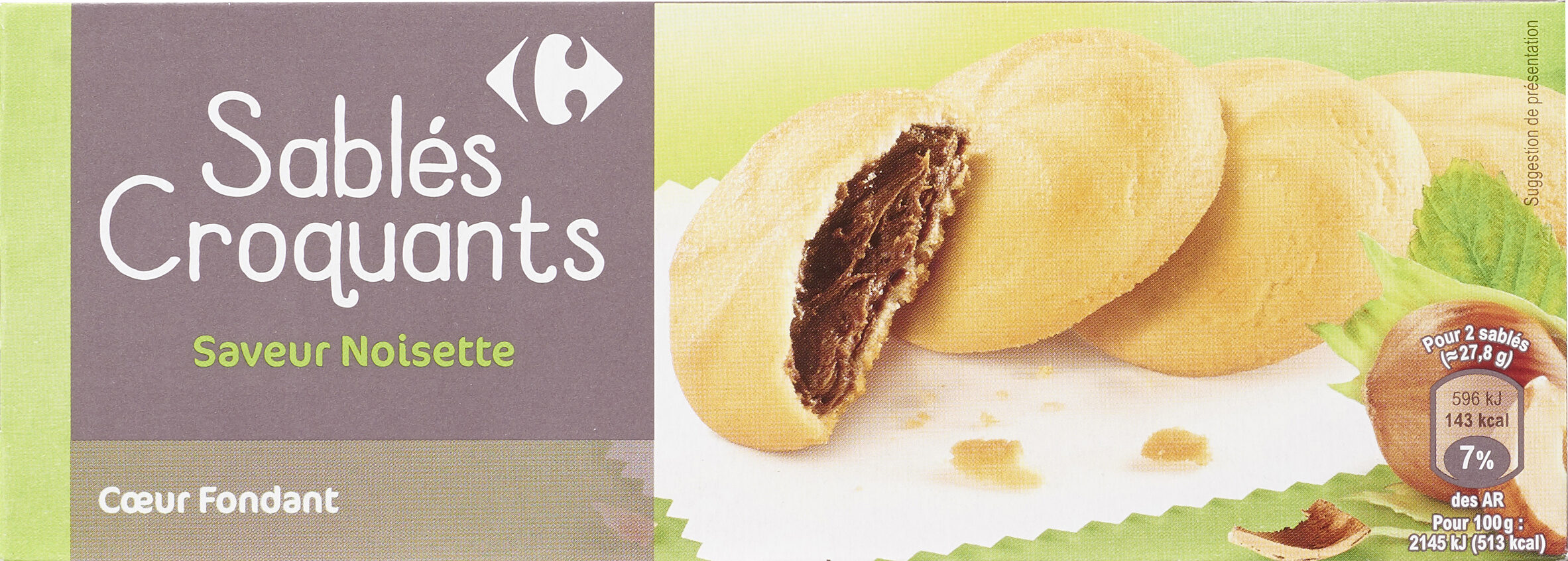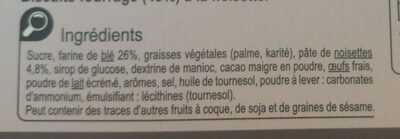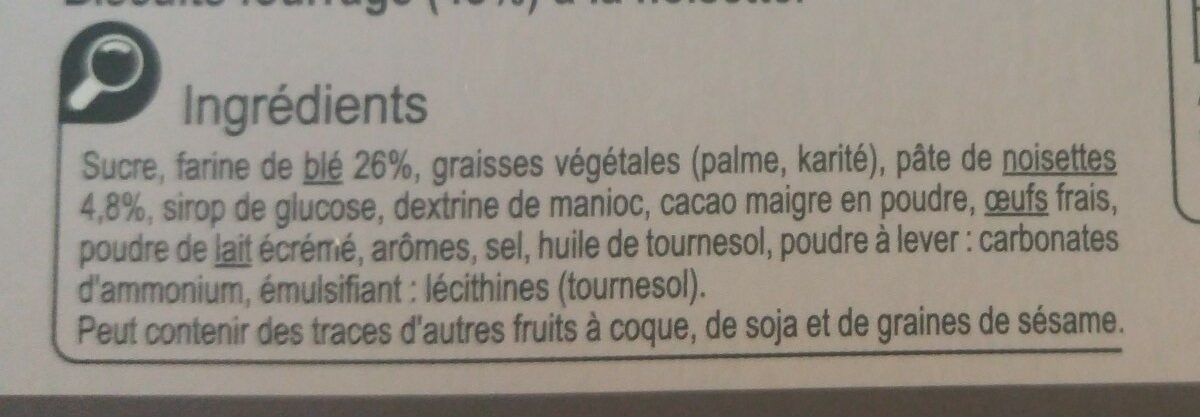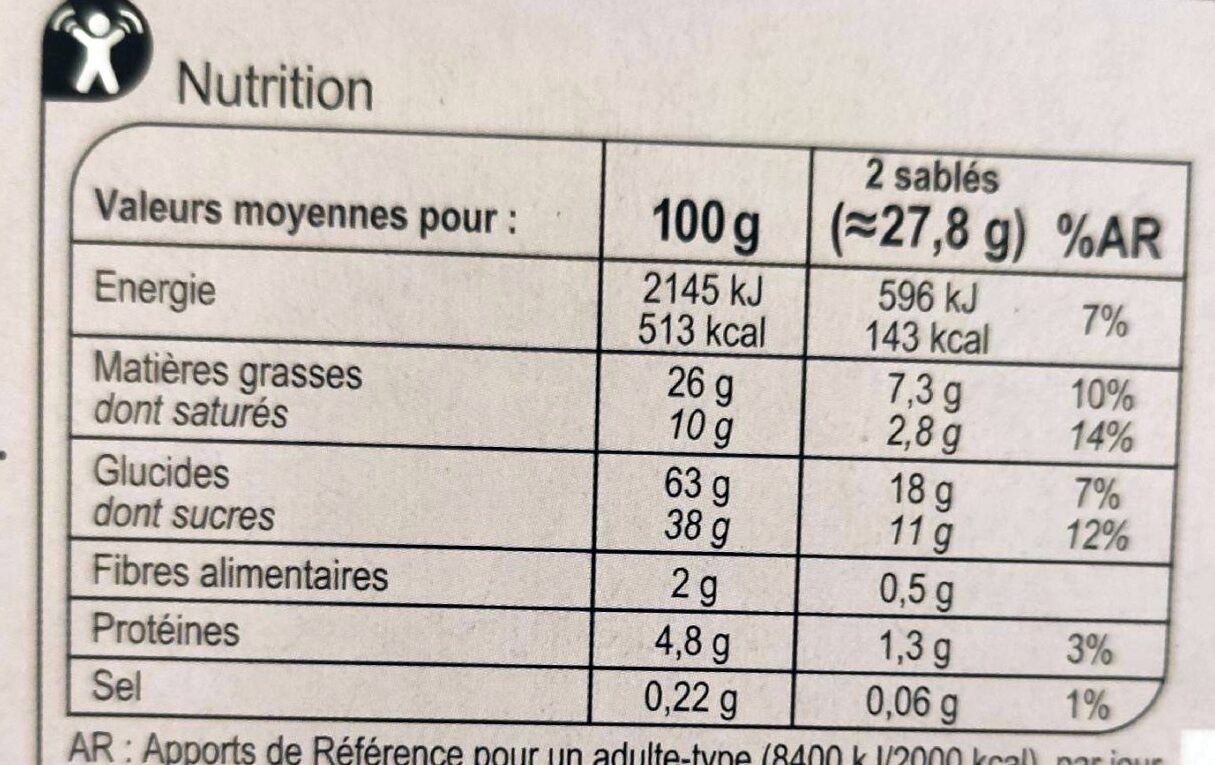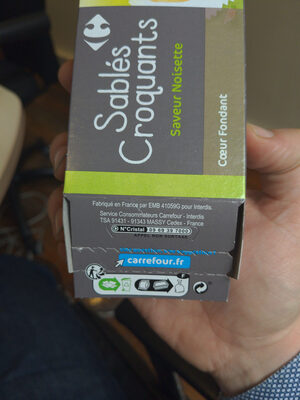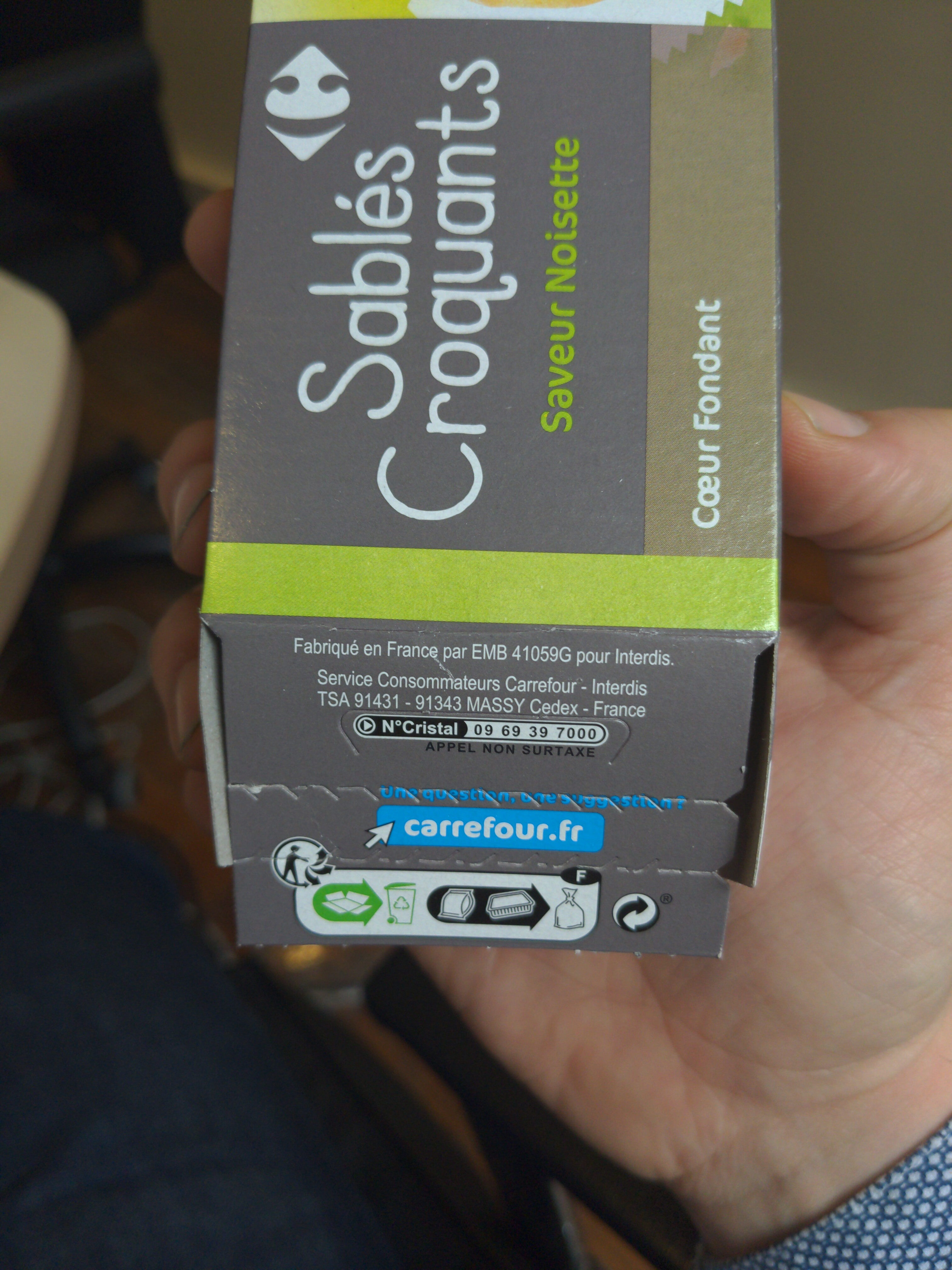Sablés croquants - Carrefour - 100 g
This product page is not complete. You can help to complete it by editing it and adding more data from the photos we have, or by taking more photos using the app for Android or iPhone/iPad. Thank you!
×
Some of the data for this product has been provided directly by the manufacturer Carrefour.
Barra-kodea: 3270190112266 (EAN / EAN-13)
Izen arrunta: Biscuits fourrage (48%) à la noisette aromatisé.
Kopurua: 100 g
Ontziratzea: en:Box, en:Cardboard, fr:Boite carton à recycler, fr:Film et barquette plastique à jeter, fr:Point vert
Markak: Carrefour
Kategoriak: en:Snacks, en:Sweet snacks, en:Biscuits and cakes, Gaileta, en:Chocolate biscuits, en:Shortbread cookies
Etiketak, ziurtagiriak, sariak:
en:Green Dot, en:Made in France, en:No palm oil
Producer: A modifier par : Fabriqué en France par EMB 41059G pour Interdis
Manufacturing or processing places: France
Traceability code: EMB 44187B - Saint-Père-en-Retz (Loire-Atlantique, France), EMB 41059G - Contres (Loir-et-Cher, France), EMB 50025 - Avranches (Manche, France)
Dendak: Dia, Carrefour, carrefour.fr
Matching with your preferences
Other information
Other information: Craquez de plaisir avec ce délicieux sablé qui cache un coeur fondant à la noisette aromatisé. Découvrez également nos autres recettes de la gamme "Les Sablés" ! Coeur fondant saveur noisette
Conservation conditions: Conservation : A conserver à l'abri de la chaleur et de l'humidité. Pour une dégustation optimale, à consommer de préférence avant le : voir sur le côté de l'étui.
Customer service: Interdis - TSA 91431 - 91343 MASSY Cedex - France
Report a problem
Datuen iturria
Product added on by openfoodfacts-contributors
Last edit of product page on by naruyoko.
Produktuaren orria -gatik editatua aleene, autorotate-bot, carrefour, date-limite-app, driveoff, ecoscore-impact-estimator, hungergames, kiliweb, nioff, org-carrefour, packbot, pauliano, roboto-app, teolemon, yuka.U29NaktidFkrTUFrdHRnZHp4VFgxZjVhbmIvM1JubUZLOHdJSWc9PQ, yuka.ZW8wZ0ZaZzVxY2tJdE1VZDBRcnJ3UGxJKzRleGVIT1ZMOGdWSVE9PQ.
